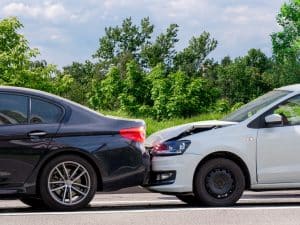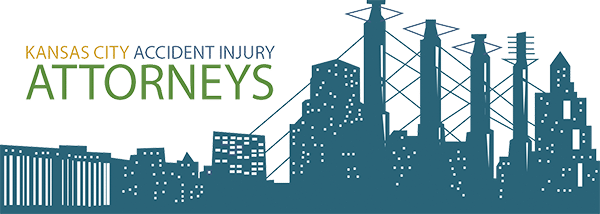Is Kansas a No-Fault State?
 Kansas operates under a no-fault insurance system for car accidents, which can often lead to confusion about how insurance and compensation work. Understanding this system is crucial if you’re involved in an accident, as it impacts how you handle claims and seek compensation.
Kansas operates under a no-fault insurance system for car accidents, which can often lead to confusion about how insurance and compensation work. Understanding this system is crucial if you’re involved in an accident, as it impacts how you handle claims and seek compensation.
Insurance companies can take advantage of those who don’t fully grasp the no-fault system, making it essential to have a knowledgeable Kansas car accident attorney by your side to help you navigate the system and fight for the compensation you ultimately deserve.
What is fault, and how is it usually established in car accident cases?
Fault in a car accident refers to the party responsible for the accident, typically due to negligence. To establish fault, you must show that the at-fault party had a duty of care, breached their duty by acting recklessly or carelessly, their behavior directly caused the accident, and you suffered losses as a result.
Determining and proving the fault of a driver or another party is a complicated process. It requires collecting significant evidence, traveling to and analyzing the accident scene, and looking over every fact and detail of the case. Not all states use an at-fault system, however.
What is the no-fault system in Kansas?
In Kansas, the no-fault system means that regardless of who caused the accident, you file a claim with your own insurance company. Therefore, any time that you are involved in an accident in the state of Kansas and need help paying for your medical expenses or other losses, your own car insurance is usually responsible.
Kansas law requires every driver or vehicle owner to have personal injury protection (PIP). The minimum PIP that each car insurance policy should have includes:
- $4,500 for medical-related expenses per person for each accident
- $4,500 for rehabilitation services
- $900 per month for up to 12 months for loss of income or disability due to the accident
- $2,000 for funeral or burial costs
- $25 per day for household services (cooking, cleaning, childcare, etc.)
If you are harmed in an accident, your PIP coverage will pay for your losses as long as the costs do not exceed the policy limit. If your children, spouse, or any other members of your household become injured while riding in or driving your vehicle, PIP will also cover their damages. If a person is riding in your vehicle but owns their own vehicle, their PIP will cover their accident-related expenses. If they do not own a vehicle, your PIP will cover their damages.
Can I sue the at-fault party for my car accident in Kansas?
While PIP covers medical and rehabilitation expenses, lost wages, and funeral costs, it does not cover significant vehicle damage or non-economic losses like chronic pain or emotional distress. For such cases, you may need to file a separate claim against the at-fault party or pursue a lawsuit if your injuries are severe or exceed your PIP limits. These are some of the qualifications to file a lawsuit for a car accident in Kansas:
- Your medical expenses are over $2,000.
- You have permanent disfigurement or paralysis.
- You have a permanent injury that will never fully heal.
- You suffered an amputation.
- You experienced a weight-bearing bone fracture or any other type of bone fracture.
If a driver or passenger passes away in an accident in Kansas, their spouse, parent, or family member can file a wrongful death suit.
What is the modified comparative negligence system?
Kansas uses a modified comparative negligence system, where compensation is reduced based on the degree of fault. If you are 50% or more at fault, you cannot seek compensation. You must be 49% or less at fault to be eligible to recover damages.
Here is an example of how this system works:
- You were speeding down the highway in hopes of making it home to catch your favorite television show.
- Another driver was sending a text message and eating their dinner while driving to work.
- The other driver’s lack of attention caused them to abruptly switch over to your lane with no turn signal or warning.
- Since you were already traveling over the speed limit, you were unable to slow down quickly enough to avoid hitting them.
- You were able to prove that even though you rear-ended them, they were distracted at the time of the accident, failed to use a turn signal, and cut you off. As a result, the judge determined they were 60% at fault for the accident.
- The judge determined that you were also partially (40%) at fault for the accident because you were speeding. Therefore, in the end, the other driver was unable to seek damages since they were over 50% at fault, and the damages you received were reduced by 40%.
The car accident lawyers at Kansas City Accident Injury Attorneys have spent years helping clients navigate the no-fault state system in Kansas. When our clients call on us to help them, we are ready and available to answer any questions and concerns and to guide them through this difficult and often overwhelming process. Since you already have enough on your plate as you focus on healing and recovering from your injuries, let us assist you with this matter. Our team can investigate your accident, review your car insurance policy, inform you of your legal options, and help you build a strong and convincing case against the liable parties. Please call our office or submit our contact form to schedule a free case evaluation. We are available any time at our main office in Kansas City, MO. You may also schedule an appointment at one of our other convenient office locations in Lee’s Summit, Parkville and St. Joseph (MO); Olathe, Kansas City, and Overland Park (KS).

Kansas City personal injury attorney James Roswold of Kansas City Accident Injury Attorneys handles cases dealing with victims of personal injury, medical negligence, wrongful death, workers compensation, nursing home negligence, premises liability, product liability, car accident, truck accident and motorcycle accident cases.

